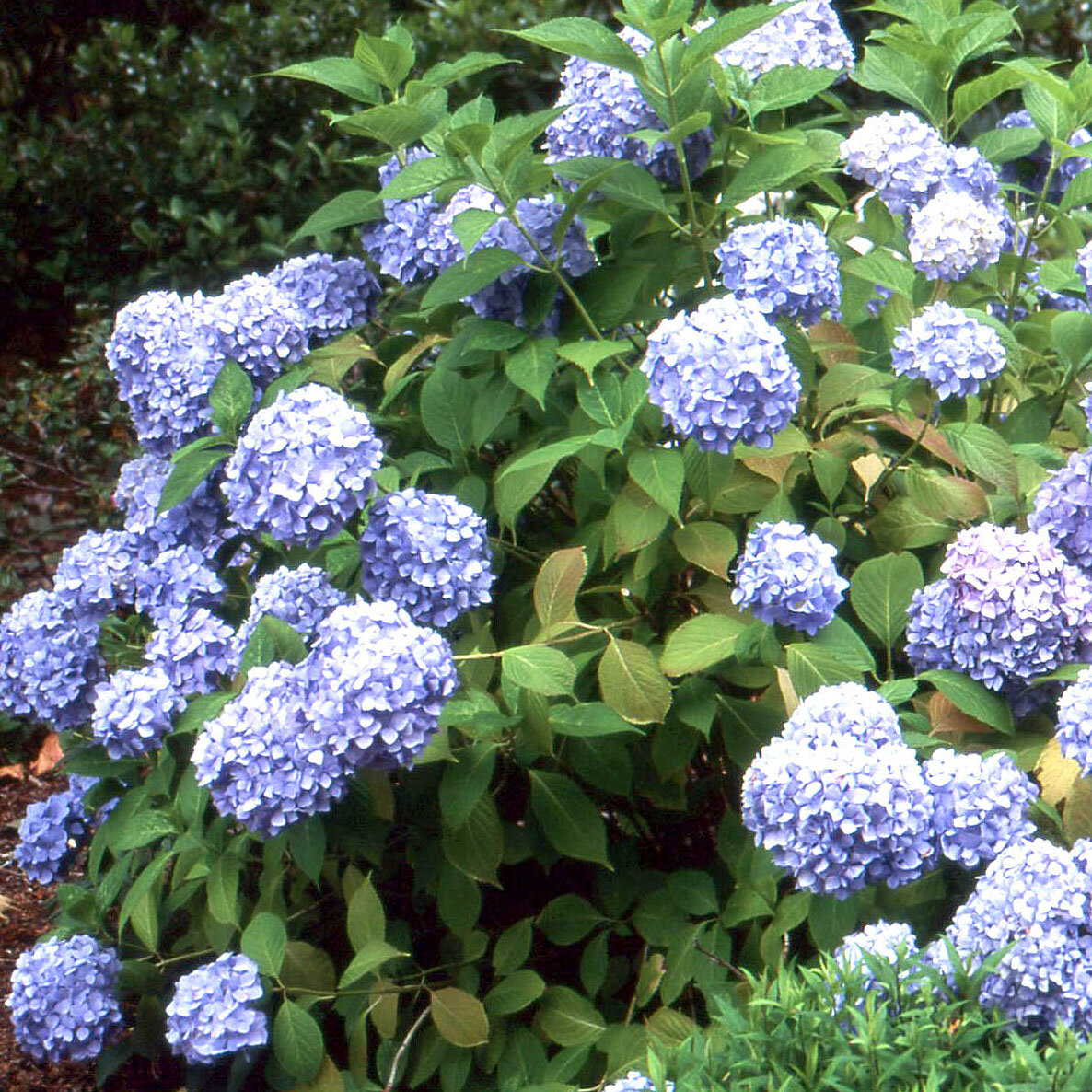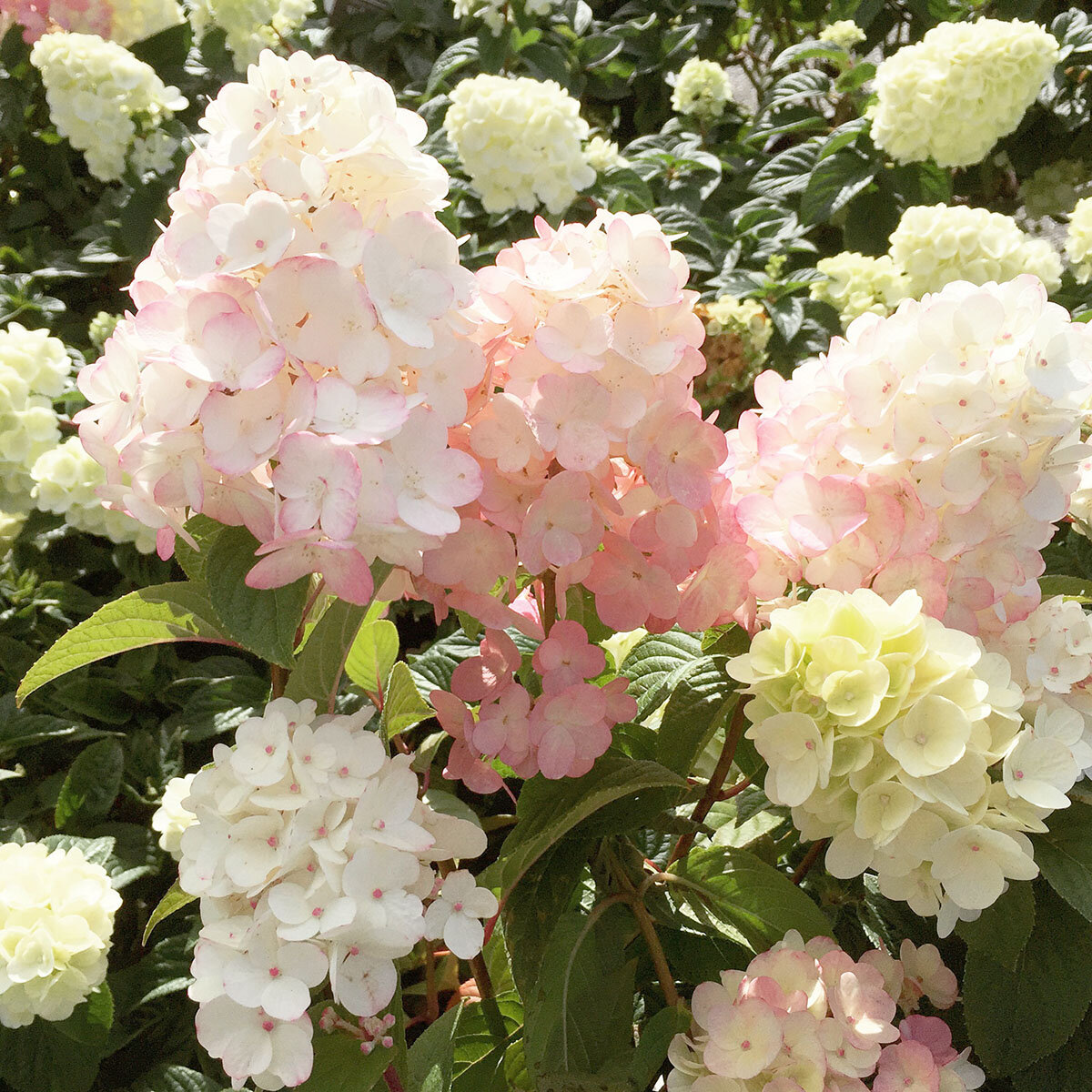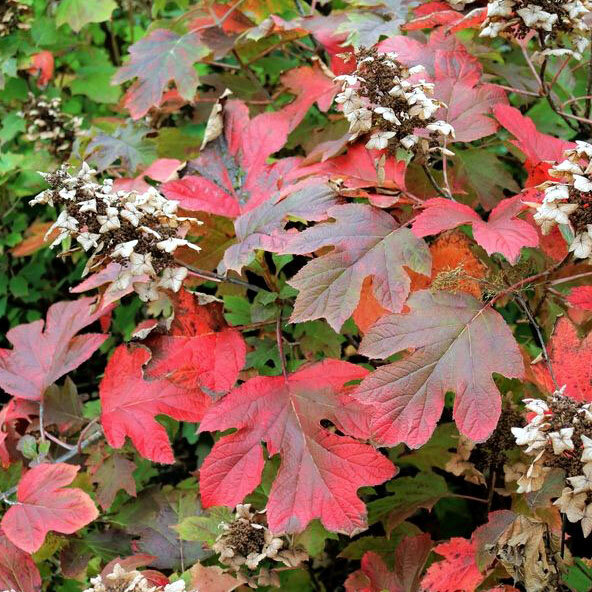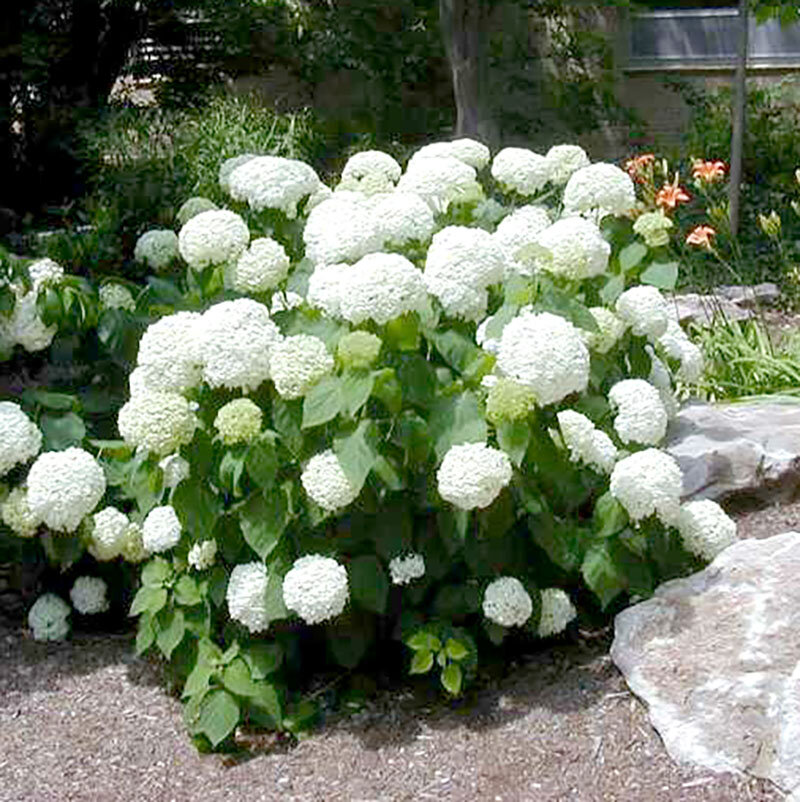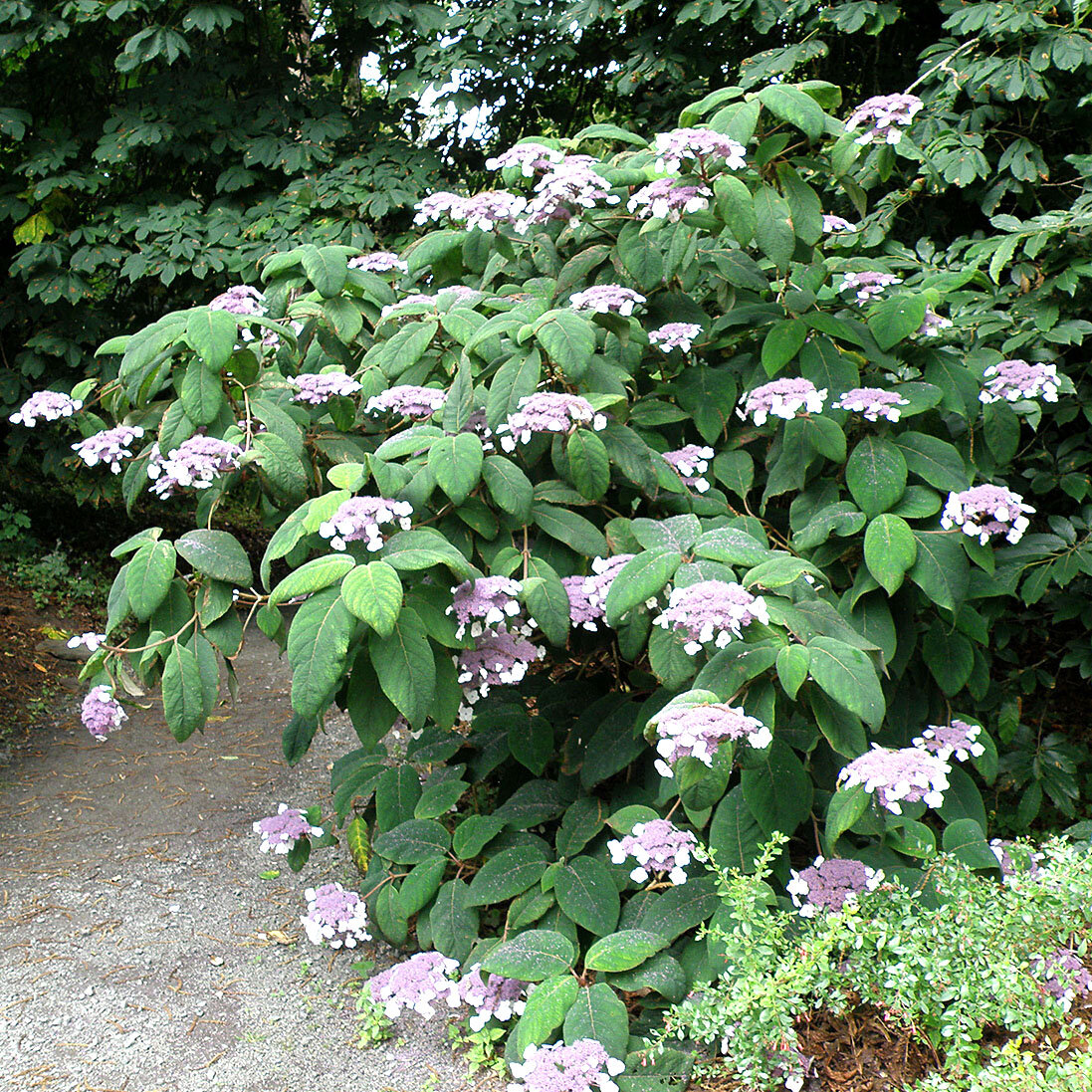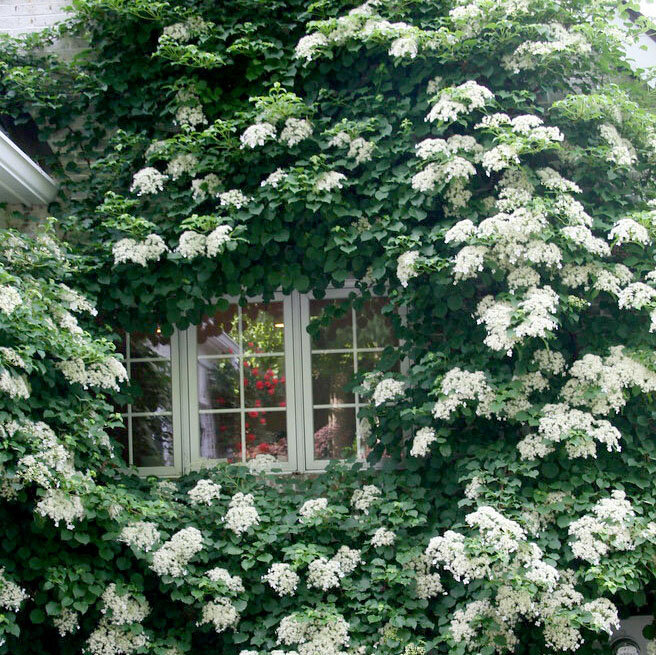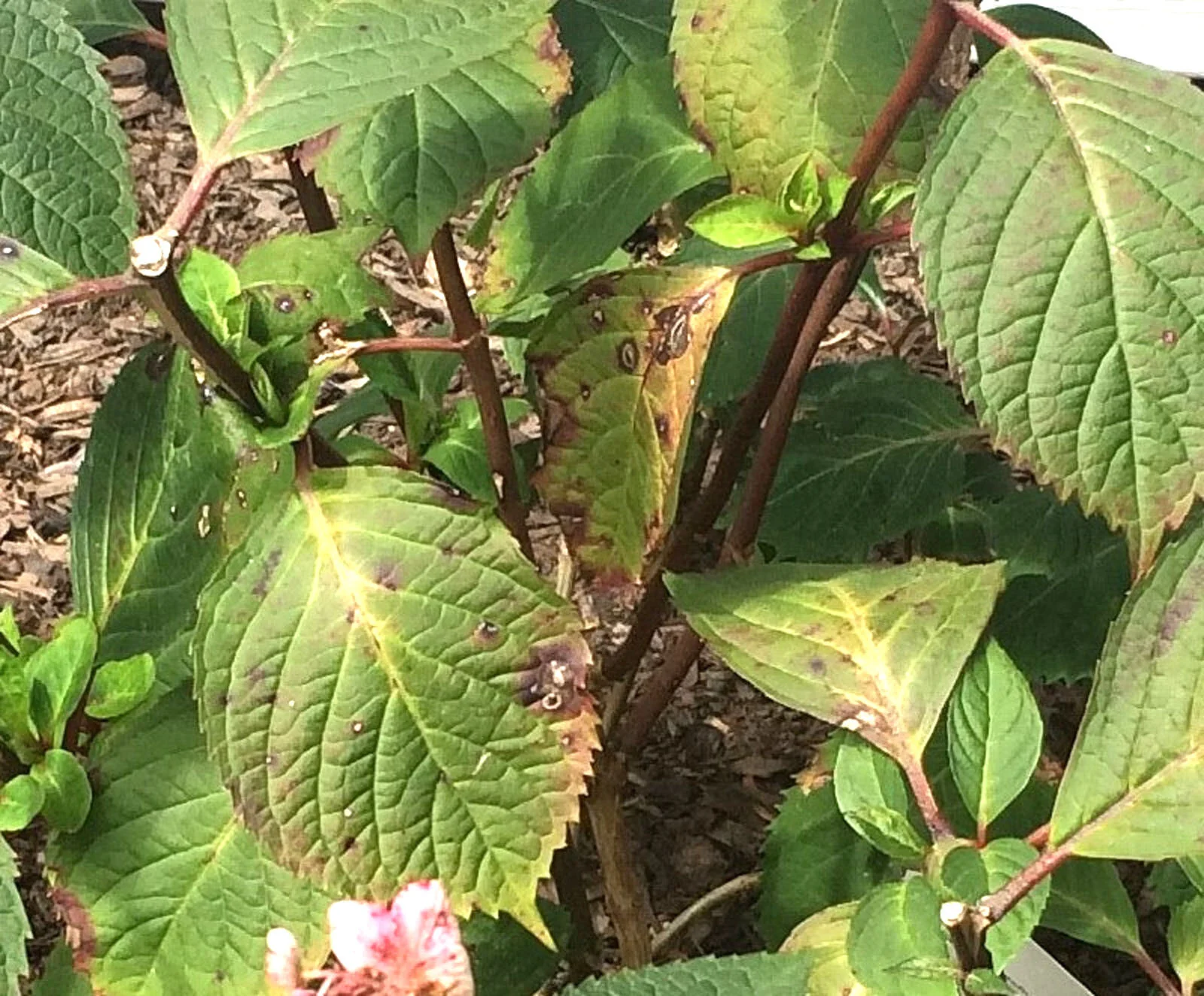Hydrangeas are classic garden shrubs known for their bold leaves and long-lasting clusters of flowers in shades of white, pink, red, or blue, blooming from mid-summer to autumn. More varieties are becoming available, featuring unique flower shapes, leaf colors, and even stem colors! Here is a summary of the most popular species groups.
Types of Hydrangea
BIGLEAF HYDRANGEA (Hydrangea macrophylla and H. serrata) is the most popular and familiar, and include “mophead” and “lacecap” flower forms. Mopheads have massed clusters of petals forming big, rounded, “snowball” heads. Lacecaps have a colorful ring of petals surrounding a central cluster of smaller, fertile flowers, imparting a flatter, more disk-like shape. Both types grow as rounded mounds generally 4 to 7 feet high and wide. Dwarf forms are often available.
PANICLE HYDRANGEA (H. paniculata) is a taller, upright hydrangea. They can be trained into “tree” forms if desired. Massive displays of huge, cone-shaped flower clusters start white and gradually turn pink, often drying and remaining on the plants for months. Some varieties have more pronounced pink or red coloration. Typically they grow to 8-12 feet tall without pruning.
OAKLEAF HYDRANGEA (H. quercifolia) features bold, oak-shaped leaves, which grow larger in shadier locations and turn a wonderful bronze or crimson in the fall (the sunnier the location the better the fall color). The flowers are in the form of a 10-inch long cluster which starts white and fades to pink. Height can reach about 6 feet, usually wider than high.
SMOOTH HYDRANGEA (H. arborescens) has rounded, white flowers on dense, upright plants ranging from 4-10 feet high. The large-flowered ‘Annabelle’ grows 4-6 feet.
ASPERA HYDRANGEA (H. aspera) has similar flowers to the lacecap, but are purple-blue in the center surrounded by a ring of white or pink flowers. Some varieties have big, fuzzy, almost tropical-looking leaves. These hydrangeas are taller and wispier than the bigleaf varieties. They typically grow to 8-12 feet tall and 6 feet wide.
CLIMBING HYDRANGEA (H. anomala petiolaris) is a mid-summer-flowering woody vine that attaches by aerial roots to brick, masonry, or wood. Blooms are cream-colored, lacy, and delicate and the flaky bark is attractive in winter.
See more examples of the different types of hydrangeas here:
BASIC Hydrangea CARE
All hydrangeas prefer humus-rich, well-drained soil and are generally not drought tolerant (note the "Hydra..." in the name). Even mature ones appreciate deep watering, especially in the summer. BIGLEAF, CLIMBING, and ASPERA hydrangeas prefer part shade as keeping them watered in summer afternoon sun can be challenging. SMOOTH, PANICLE, and OAKLEAF hydrangeas tolerate full sun after getting established.
CHANGING FLOWER COLOR
While bigleaf varieties are bred for a certain color, some can be altered by adding specific elements to the soil when planting, and each fall or spring, well ahead of bloom time. For blue colors — add aluminum sulfate (sold as “blueing formula,” which may be applied any time of year). For pinks and reds — add dolomite lime.
Pink hydrangeas planted in more acidic soil with acid-loving plants such as rhododendrons, azaleas, and conifers, are likely to turn more blue. Tap water is often slightly alkaline and thus may turn flowers pinker, especially in containers. Some varieties are resistant to any color changes.
DRYING FLOWERS
Hydrangeas make excellent dried flowers to enjoy in winter. Choose mature blooms (whose center sepals are fully open). Remove the leaves and put the stems in water like other cut flowers. Once the flowers have become like paper, remove them from the water and use them in dried arrangements.
PESTS & DISEASES
If hydrangeas receive their basic needs of light, soil, and water, there’s not a lot that bugs them.
Bacterial spot and fungal diseases such as powdery mildew can form on plants that are stressed by too little or too much water, too crowded, or in infertile or compacted soil. These are usually treatable by identifying and improving the cultural conditions, and perhaps picking off the most affected leaves (and disposing of fallen leaves over the winter) to prevent the disease’s spread. Also, watering the soil rather than getting the leaves frequently wet can help minimize these issues.
Poorly drained, constantly wet soil can cause root rot, a more serious problem. If soil drainage can’t be improved, consider moving the hydrangea to a better location.
Insects such as aphids, spider mites, or root weevils, as well as slugs or snails, occasionally attack healthy hydrangeas but are more common on weaker plants. Serious infestations might require spray treatments, but again, healthy culture is the best preventative.
Bacterial leaf spot on a hydrangea, likely from water overspray. Note that some older, lower leaves might develop spots without affecting the rest of the plant.
PRUNING Hydrangeas
Bigleaf hydrangeas generally don’t require pruning. We recommend deadheading the flowers as they start to fade and minor rejuvenation pruning of old specimens. Frequent pruning can reduce blooming. It may stimulate bigger flowers the following year, but there will be fewer of them. If a shorter plant is desired, it is best to plant a dwarf variety than to set yourself up with constantly pruning a large growing variety.
Older plants, however, may benefit from occasional rejuvenation pruning if they have become overgrown or very dense. For bigleaf hydrangeas, this is best just after flowering in late summer. If delayed too long after flowering, the flower buds for the following year might not have sufficient time to develop. Remove any dead, damaged, diseased or crossing branches. Then thin the plant by cutting out the oldest (woody) branches back to the main trunk or to the ground. The more a branch is exposed to light, the more it will tend to flower. Hydrangeas can survive being cut back more severely, even all or most branches to the ground. But they will likely need 2-3 years or more before blooming again.
Panicle hydrangea limbed up into a tree form. (image: Hugh Conlon)
Optional pruning of other species is described here. On any of these, routine pruning can include removing spent flower clusters if unattractive (in fall), and thinning or heading back dead, overly-vigorous, or awkward shoots (in late winter/early spring).
PANICLE: This upright species can be trained into “tree” forms if desired, by limbing up lower branches (removing smaller, low branches to highlight the main trunks). Can also be trained as a young plant into a single upright trunk.
OAKLEAF: Blooms on last year’s wood, so if desired, prune right after flowering in late summer.
SMOOTH: Blooms on new wood, so can be pruned heavily in early spring if desired.
ASPERA: These plants have a nice natural shape and it is usually not necessary to prune them, except to remove dead or damaged wood. Blooms on last year’s wood, so if desired, prune right after flowering in late summer.
CLIMBING: Requires little or no pruning, perhaps only to thin or direct growth. If certain shoots have grown out of bounds, reduce their length in summer.
We at Swansons are here to help you discover the right hydrangea for your location and tastes, and help it thrive. Visit or contact us with any questions!


